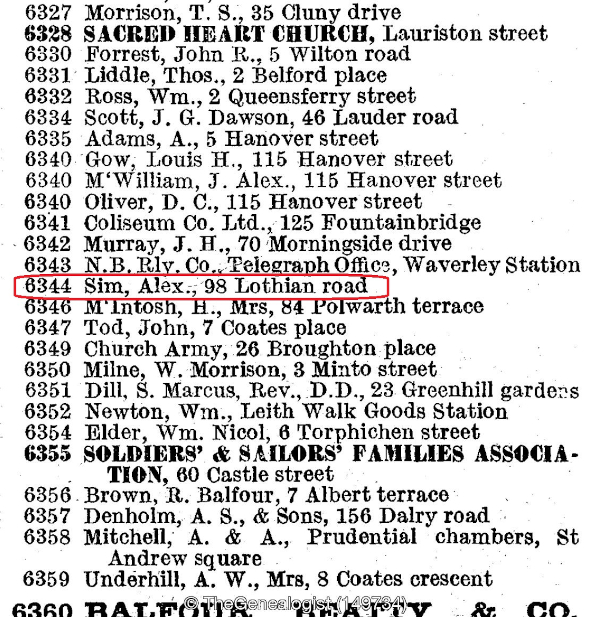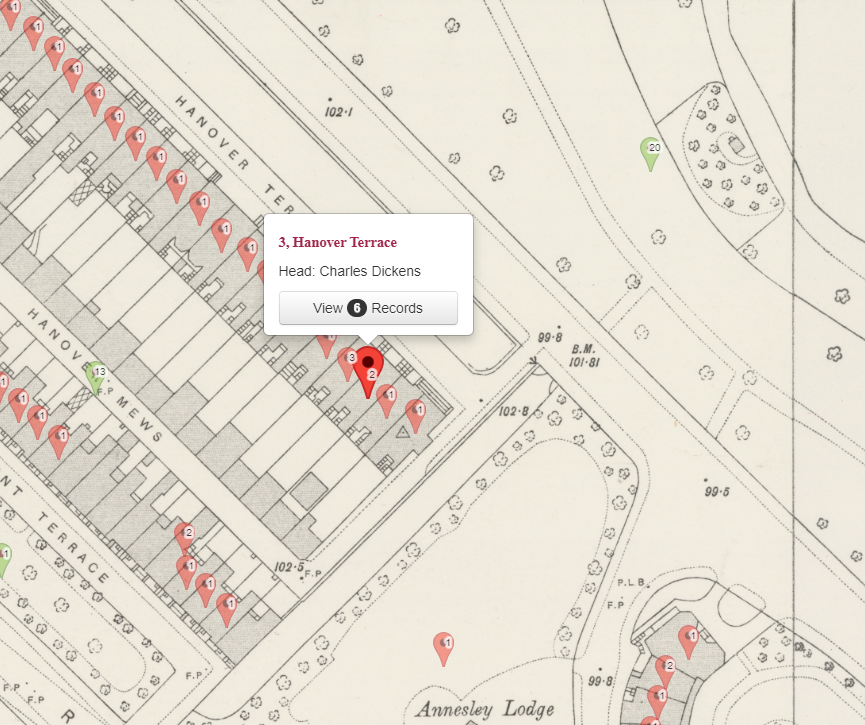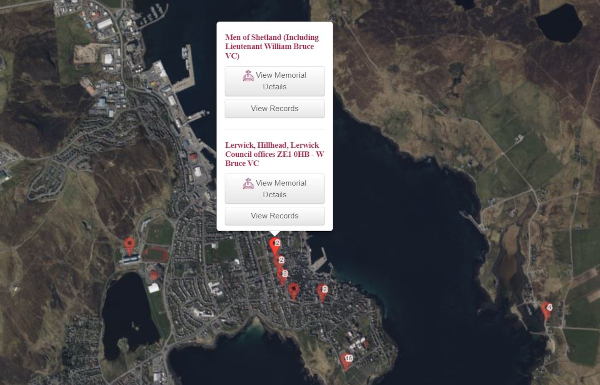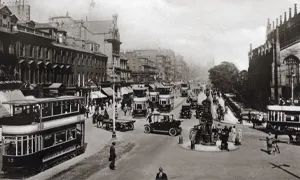
News and Articles from 2024
Choose a year
Surrey Land Tax Records Now Online
26th April 2024
We have released over 225,000 heads of households and property owners from the 1910-1915 Lloyd George Domesday Survey, covering the county of Surrey.
This boosts our ever-growing Landowner and Occupier records from this period to a total of over 2.6 million. The coverage of these IR 58 records now includes all the boroughs of Greater London plus Bedfordshire, Berkshire, Buckinghamshire, Hertfordshire, Oxfordshire, Middlesex, Northamptonshire and with this release, Surrey.
Fully searchable and added to our powerful Map Explorer™, this resource allows researchers to find ancestors’ property from all of Surrey's parishes.

Over 10 Million Individuals added to Residential and Trade Directories
12th April 2024
Our latest release contains over 10 million new individuals recorded in directories from the first two decades of the 20th Century. This virtual book shelf stacked with volumes from the early 1900s to 1929 includes publications from all over the United Kingdom and Ireland.
These directories are filled with listings of people, their addresses and details of the places they lived in. Other directories list businesses and offer a fascinating glimpse into ancestors from this time.

Over 3 Million New Irish Records Released for St Patrick’s Day
18th March 2024
Get ready to paint the town green this St. Patrick's Day with a bumper release this week! We have just released over 1,769,000 individuals to our Irish Catholic Parish Record Collection, covering over 80 parishes in County Tipperary.
Also making up the releases in our "St Patrick’s Day Parade" are over 1,263,000 Irish Wills.
For the many family historians with Irish ancestors, these latest records will be a welcome addition to the celebrations of this day that is so close to the hearts of the Irish.
So raise a glass of Guinness, wear some green and enjoy this latest release from the Emerald Isle.

Over 120,000 Worcestershire Parish Records Released
8th March 2024
Over 120,000 individuals recorded in Worcestershire Parish Records have just been released in time for The Family History Show, Midlands on Saturday 16th March 2024.
This welcome addition to our growing collection of parish records brings our total Parish Records for Worcestershire up to 2.65 Million Individuals. The records include transcripts of early entries stretching back to Tudor times.
Released in association with Malvern Family History Society, this is the latest fruit of an ongoing collaboration where high-quality transcripts of Parish Records are being made available on TheGenealogist, as well as FHS-Online.
Records from the following parishes are included in this release: Abberley, Abbots Morton, Alfrick with Lulsley, Alvechurch, Areley Kings, Astley, Bayton, Belbroughton, Bengeworth, Beoley, Berrow, Besford, Birlingham, Birtsmorton, Bishampton, Bockleton, Bredon, Broadway, Bromsgrove, Chaddesley Corbett, Church Honeybourne, Church Lench, Churchill with Blakedown, Claines, Cleeve Prior, Clifton on Teme, Cofton Hackett, Colwall, Daylesford, Leigh with Bransford, Lindridge, Mathon, Pershore Holy Cross, Pershore St Andrews, Pontardawe, Redmarley D'Abitot, Shipston on Stour, Shipston-on-Stour, Teddington, Warndon, Welland, Whittington, Wick, and Wolverley.

See where your ancestors lived in 1861 on MapExplorer™
23rd February 2024
For the first time, you can explore 1861 census records for England, Scotland and Wales seamlessly connected to contemporary maps with pins revealing the parish, thoroughfare, or even the very building where your ancestor lived. This enhancement adds a fascinating layer to your research and exploration.
Family historians and house historians will now find it easier than ever to locate a person in the official population count from 1861. With one click, you can view a historic map with a pin indicating where a person was living in that year.
You can then go on to see the routes your ancestors would have used to visit shops, local pubs, churches, places of work, schools and parks. You can also find where the nearest railway station was, important for understanding how our ancestors could travel to other parts of the country to see relatives or visit their hometown.
The 1861 Census joins previously released 1871 to 1911 censuses and the 1939 Register, which are all linked to TheGenealogist’s innovative Map Explorer™. This means that with just the click of a button, you can travel in time through 7 decades of records to discover future occupants and see how an area changed.
Most of the Greater London area and other towns and cities can be viewed down to the property level, while other more rural parts of the country can be identified down to the parish, road or street.

New Records added to MapExplorer™
9th February 2024
We have just added over 142,000 new individuals to our War Memorial collection, bringing the total number of fully searchable War Memorial Records on TheGenealogist to over 1,688,000. These fully searchable records have been transcribed with their location plotted on Map Explorer™ so you can find the names of ancestors who made the ultimate sacrifice.
These War Memorials, from a variety of places in the UK, Australia, Canada, New Zealand and the United States, can be used to find ancestors and reveal organisations, churches, towns and communities that they had belonged to.
Also released this week are thousands of extra historical pictures added to our Image Archive. These often fascinating and atmospheric drawings and historic photographs have also been geolocated with pins on the Map Explorer™. Having found an ancestor’s address in a record such as the census and seeing it located on the map, researchers can then view pictures of the neighbourhood as it had once looked when our ancestors lived there.
We have boosted this resource with the addition of some great locational views, including over one thousand beautiful engravings for places of interest in the capital from Old and New London by Edward Walford. There are now over 12,000 geolocated images viewable on Map Explorer™.

Over 5 Million Residential and Trade Records Released
26th January 2024
We have just added over 5 million individuals to our Residential and Trade Directories collection, helping you discover your ancestors, their addresses, and their occupations back to 1744.
The new records cover England, Scotland, Wales, Ireland and the Channel Islands, along with some from as far afield as America, Canada, India, New Zealand and South Africa.
Dating from 1744 to 1899, the directories in this addition are a useful finding aid for ancestors' names, addresses, and occupations and can offer contemporary details of where your past family lived. If a forebear had a business, then the commercial listings in the directory could help find where an ancestor may have worked.
Early Directories can also be useful for finding the addresses of residents before the census, reveal the railways that may have served the area and to find other communications links to nearby towns. With this information, those who may have ‘lost’ an ancestor may make an educated guess of where a person may have moved to live in the past.

Over 389,600 new records added to the 1939 Register
12th January 2024
More than 389,600 new individuals have been added after being opened in accordance with the 100-year rule and open requests submitted by the public, including actor and director Richard Attenborough. This now means we can search for even more of our ancestors from this period and see where they lived using the powerful mapping tools that we have a reputation for providing.
As these records are linked to pins on our Map Explorer™, a tool that allows you to view both historical and modern maps, family historians are able to explore the neighbourhood where their forebears lived as World War II broke out.
Map Explorer™ will often be able to show the location of properties from 1939 down to the actual building in many cases and at least to the thoroughfare or parish. This makes it a great tool for the family historian to use to find where their forebears lived at this time.
House historians will also be excited to discover that TheGenealogist’s version of the 1939 Register can also be searched from a plot on a map to find who lived there in 1939. This turns the search on its head - as well as being able to look for where a person lived, you can also search for who lived at a property. You can even use Map Explorer to browse the map from house to house to see who lived there, a feature that can only be found on TheGenealogist.

Choose a year
Featured Articles
Visit our featured article section for fascinating stories and the latest news from the world of genealogy.
Latest Articles

The Strange Case of Jekyll (and Hyde) the Garden Expert
24th April 2024
We reveal where a garden designer put down her roots using this important Surrey land tax release.

More than just an address
11th April 2024
Looking up our forebears in the Street and Trade Directories

A long way from Tipperary
15th March 2024
Australian outlaw’s father discovered in the Irish Parish Records
Next Event

The Family History Show, York!
Saturday 22nd June 2024
10:00 –16:00 (GMT)
Put your research questions to an expert, watch a talk, speak to a local society, archive or genealogical supplier.
- Free talks all day, held in a large lecture hall.
- Free Experts on hand to help with your queries.
- Many family history societies, archives and companies will be attending from all over the country.
Special Offer! Buy tickets for £8.00 (£12.00 on the day)
Buy your tickets early and get two for the price of one!
Find Out More Purchase Tickets
Future Events
Unable to make the next show? We also have shows planned for the following locations:
Press Releases
Visit the press releases section for the official write-up of all our news.
